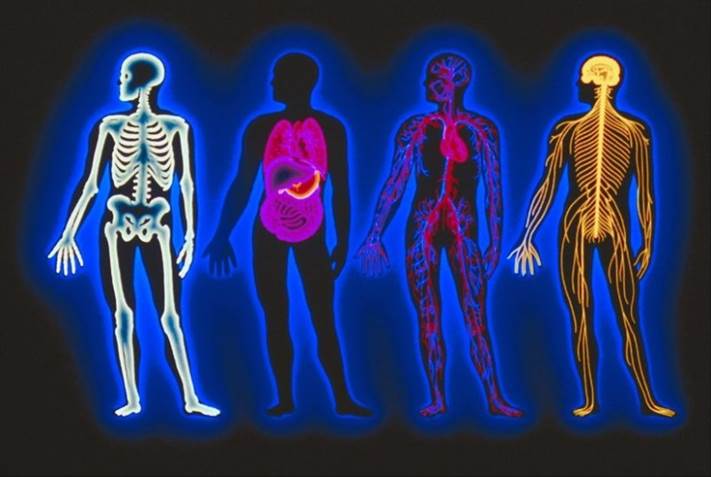
In order for students to critically think and use knowledge at the bedside, they must have a deep understanding of not only nursing science but the applied sciences of pathophysiology, pharmacology, and fluid and electrolytes.
Of these three applied sciences, pathophysiology lays the foundation and must be deeply understood in order for pharmacology and fluid and electrolytes to make sense.
But pathophysiology is typically a nursing prerequisite and is not consistently integrated in the nursing curriculum. Two weeks ago I discussed how nurses must think more like a physician to be a better nurse by possessing the ability to APPLY pathophysiology to the bedside.
Today, I will discuss three practical strategies to situate and make pathophysiology central to understanding why specific treatments, medications, and nursing interventions are utilized in the clinical setting.
Patho Foundational to Clinical Reasoning
Nursing students must understand pathophysiology to critically think and apply knowledge to the bedside. That is why when I reflected and created my step-by-step template of how a nurse clinically reasons in the clinical setting, my first question included the importance of understanding the patho of the problem.
1. What is the primary problem and what is the underlying cause/pathophysiology of this problem?
This template is also a FREE download! CLICK HERE to access this and other clinical reasoning tools!
As a nurse who continues to practice in both critical care in the emergency department, I continually see the relevance of understanding and applying pathophysiology to patient care.
When this understanding is not present by the nurse it directly impacts the ability to clinically reason and establish correct priorities. For example, I have observed newer nurses who have cared for patients with a septic presentation who were not clinically concerned when their patients had systolic BP’s in the 70-80’s because they didn’t look that sick.
Sepsis is a common clinical presentation that I see in both of these settings. I have made it a priority to deeply understand the complexity of sepsis and the inflammatory response and the physiologic changes that are a part of this presentation. By understanding pathophysiology, I recognize the significance of elevation in the serum lactate, WBC, neutrophils, and lowered blood pressure.
Though these clinical areas are high stake and require a high level of critical thinking, the essence of nursing practice requires a similar standard of knowledge that depends on pathophysiology to use knowledge and think like a nurse regardless of the practice setting.
Because these strategies encompass both the classroom and clinical settings, in order to maximize effectiveness, it is important that both classroom and clinical educators work together and emphasize applied pathophysiology in the clinical settings what students have hopefully been taught in the classroom.
Here are three practical strategies that any educator can implement to effectively situate pathophysiology and contextualize it in both the classroom and clinical settings.
Patho in the Classroom
Just because your students had pathophysiology as a prerequisite do not assume they can still apply it to whatever content or topic you are teaching in the classroom by reinforcing patho any chance you get.
Strategy #1: Contextualize patho to every problem & meds
lllness/disease process
Every illness or disease that is presented in the classroom must have a brief review of the pathophysiology of the illness and disease process. Just one or two slides will suffice.
Most medical surgical textbooks have an excellent summary of the patho of the illness that can be highlighted or use nursing pathophysiology texts to go a little bit deeper as needed. Regardless of the texts you use, be sure to begin any lecture of an illness with its relevant pathophysiology!
My favorite professional web-based resource to go deeper than a typical textbook regarding pathophysiology that is geared for nurses and physicians is Medscape:http://emedicine.medscape.com/
Medications
When you present a lecture on any illness, you most likely include the medications most commonly used to treat this problem. Use this opportunity to briefly highlight the mechanism of action of these most important and commonly used medications.
Use the language in a nursing drug guide or better yet go to Micromedex which has a much more detailed explanation of the pathophysiology in the mechanism of action portion.
Ensure that your students UNDERSTAND this language because they will be using this same database at some point in clinical practice.
For example, this is the explanation of the mechanism of action of Amiodarone, a common anti-arrythmic in Micromedex:
“Amiodarone is an antiarrhythmic drug with predominant class III effects of lengthening cardiac action potential and blocking myocardial potassium channels leading to slowed conduction and prolonged refractoriness”
Would your students be able to recall the stages of the cardiac action potential and the relationship of blocking potassium channels and slowed conduction? Probably not. Therefore use your lecture to briefly explain this important content!
Patho in the Clinical
Strategy #2: Expect students to state the patho of the patient’s problem in their OWN WORDS
Clinical paperwork typically requires that students identify the primary problem of the patient being cared for. But does your clinical paperwork include space for the students to write out the pathophysiology of the primary problem?
And if you do, are students expected to write this out in their own words and will you will hold them accountable for this level of understanding as you round during the clinical day? This is the high bar that you want to maintain regarding pathophysiology. This will deepen their learning and push them to be the best nurse that they can possibly be.
Strategy #3: Expect students to state the mechanism of action of the most important meds given in their OWN WORDS
Have a similar standard for student understanding of the mechanism of action of the most important or commonly used medications in your clinical setting. Any student can memorize or parrot what is in the drug guide, but do they truly understand the mechanism of action?
For example, would your students be able to concisely state in their own words if you simply asked:
- What is a beta blocker blocking?
- What is an ACE inhibitor inhibiting?
- What is a calcium channel blocker blocking? as well as the physiologic responses of each of these responses?
This is the level of understanding that will not only get your students to pass the NCLEX®, but more importantly be well prepared and critically think in clinical practice.
In Closing
If you are a nurse educator and preparing for the fall semester, now is the time to reflect and determine if your program or your content is situating and integrating pathophysiology across the curriculum.
If not, now is the time to make needed adjustments in your classroom presentation as well as in how you approach clinical education.
In order to teach applied physiology, it must also be deeply understood by the nurse educator. Do what is needed to deepen and strengthen your knowledge so that you can teach these concepts well to your students.
By emphasizing and integrating pathophysiology in the classroom and clinical settings, it will not only strengthen student learning but will ultimately result in better outcomes for the patients your students will soon be caring for because of their enhanced ability to critically and clinically think.
Comment question:
What strategies have you found effective to integrate pathophysiology in the class and clinical settinmgs?
Comment below and let the conversation begin!
Keith Rischer – PhD, RN, CEN
As a nurse with over 35 years of experience who remained in practice as an educator, I’ve witnessed the gap between how nursing is taught and how it is practiced, and I decided to do something about it! Read more…
The Ultimate Solution to Develop Clinical Judgment Skills
KeithRN’s Think Like a Nurse Membership
Access exclusive active learning resources for faculty and students, including KeithRN Case Studies, making it your go-to resource.



